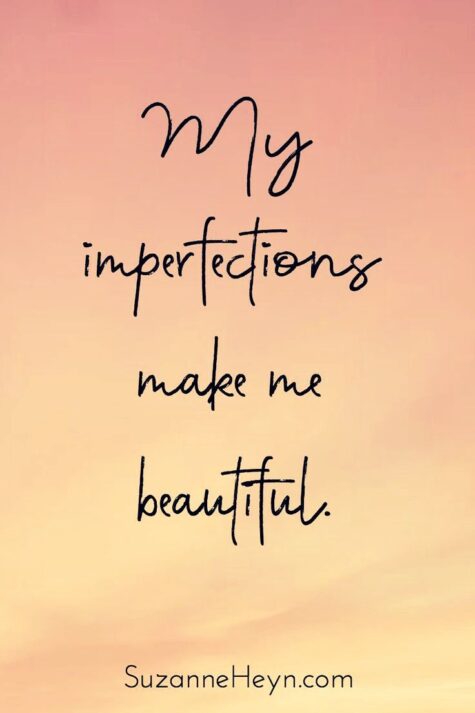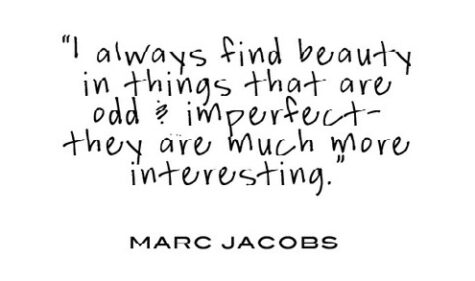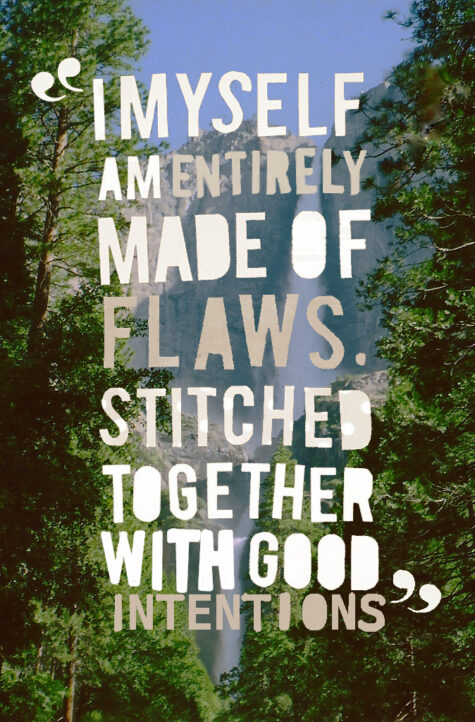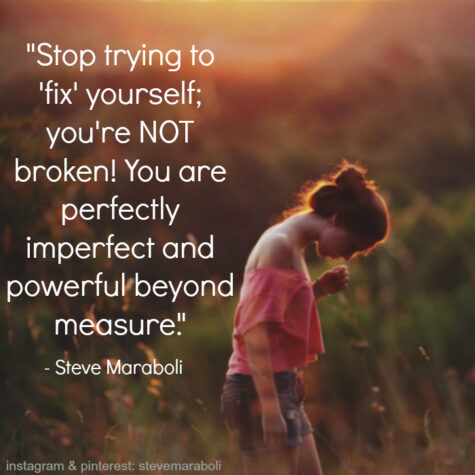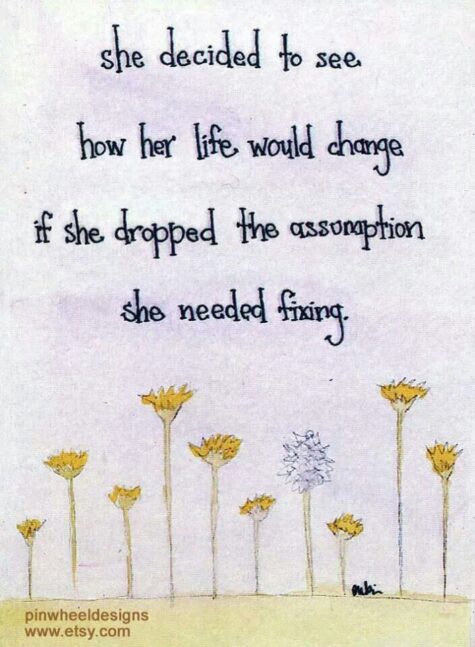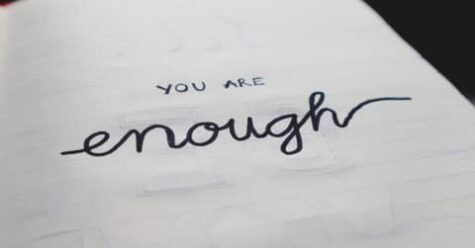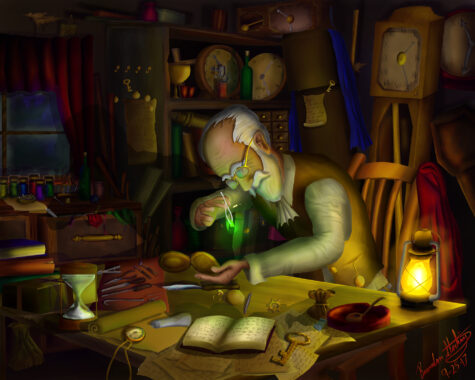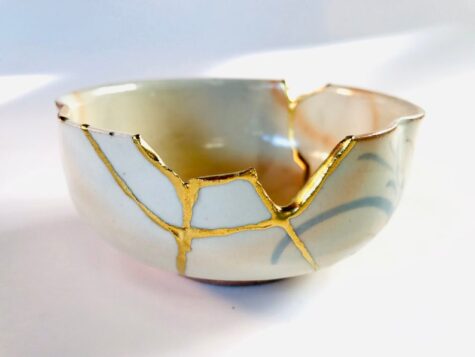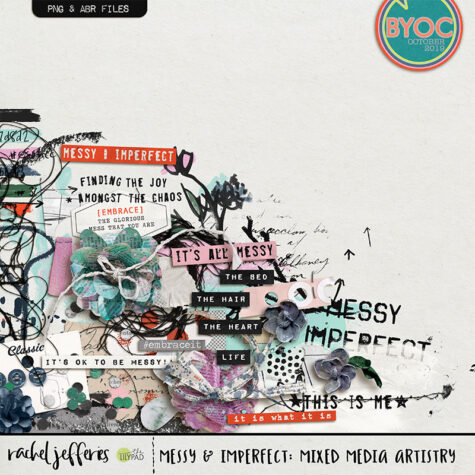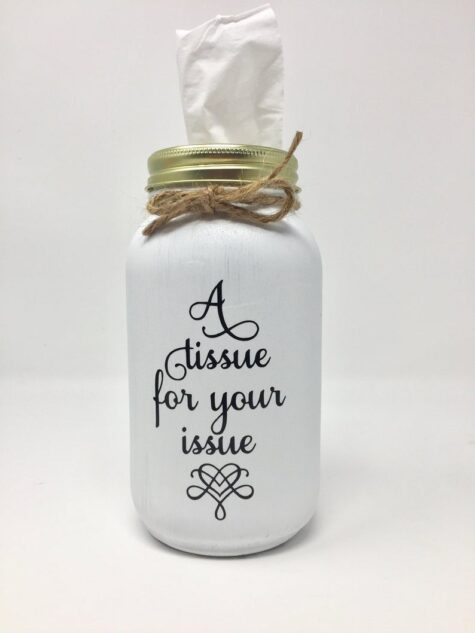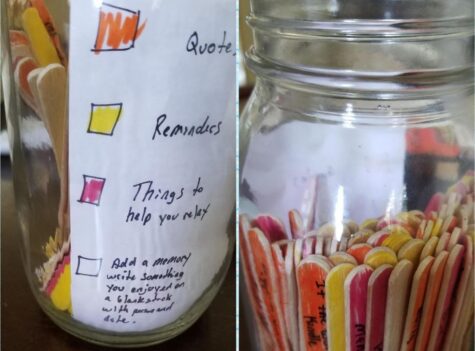Monthly Archives: January 2022
Just Be Flawsome
It Matters
Yesterday we read a little bit about Shame. One of the quotes went something like this:
Perfectionism is, at its core, about trying to earn approval and acceptance. Perfectionism is other-focused—What will they think?
There was more to it, but it got me thinking, because it really does matter what other people think. I know that a lot of self help, self esteem, psychologists and counselors will tell you that it doesn’t matter what other people think of you. Which sounds comforting, but it’s not exactly true.
We live in a society, a world full of other people and it really does matter what other people think. For example:
- To a defendant in a courtroom, it totally matters what those twelve people in the jury think.
- Looking for employment? The approval and acceptance of others is very important.
- If you want to keep your job, or get a promotion, what your supervisor thinks of you matters quite a lot.
- Suppose you go missing, or get lost in the woods. If nobody cares what happens to you, will you ever be found?
- A homeless person walks into a restaurant… what other people think will determine whether or not he gets a hot meal or a “police escort” out of the building.
- You get stopped for a traffic violation… you think it doesn’t matter what the cop thinks of you? It matters.
I could probably come up with a bunch more examples, but you get the point. It’s not unusual for our survival to depend on the acceptance and approval of others.
Which brings me to my point. Perfectionism is a survival mechanism. Fear of failure is a survival mechanism. I think the trick is to create a space for yourself where imperfection is acceptable, failure is expected, and you can just be real without worrying about how you will feed your family, pay the bills, and take care of the practical things.
If you can find your “tribe,” your circle of friends who know and love you for who you really are, it becomes simple to put on the “fit into the larger world” suit when you need to.
So, how do you find your tribe? I think it comes down to, accepting and loving yourself… your flaws, faults and imperfections as well as your talents, skills, and special attributes. Each one of us is a complex collection of pretty much everything in varying amounts… the good, the bad, the ugly… and we are each beautiful in our own way.
- If you can’t love and accept yourself for who you really are, how can you expect someone else to?
- If you can’t love and accept your family and friends for who they really are, why are you hanging around with them?
- If the people you are hanging around with don’t love and accept you for who you really are, find people who will.
So… those are my thoughts for today. Anybody have anything they want to add?
Shame
It occurred to me that no conversation about imperfection and failure is complete until we address that one thing that most of us will go to great lengths to avoid. Shame.
Here are some thoughts about shame by Brené Brown that can be found in her book: The Gifts of Imperfection: Let Go of Who You Think You’re Supposed to Be and Embrace Who You Are.
What is shame?
Shame is that warm feeling that washes over us, making us feel small, flawed, and never good enough.
Here are the first three things that you need to know about shame:
- We all have it. Shame is universal and one of the most primitive human emotions that we experience. The only people who don’t experience shame lack the capacity for empathy and human connection.
- We’re all afraid to talk about shame.
- The less we talk about shame, the more control it has over our lives.”
People often want to believe that shame is reserved for the folks who have survived terrible traumas, but this is not true. Shame is something we all experience. And while it feels as if shame hides in our darkest corners, it actually tends to lurk in all of the familiar places, including appearance and body image, family, parenting, money and work, health, addiction, sex, aging, and religion. To feel shame is to be human.
We’re all capable of developing shame resilience. Shame resilience is the ability to recognize shame, to move through it constructively while maintaining worthiness and authenticity, and to ultimately develop more courage, compassion, and connection as a result of our experience. The first thing we need to understand about shame resilience is that the less we talk about shame, the more we have it.
Shame needs three things to grow out of control in our lives: secrecy, silence, and judgment. When something shaming happens and we keep it locked up, it festers and grows. It consumes us. We need to share our experience. Shame happens between people, and it heals between people. If we can find someone who has earned the right to hear our story, we need to tell it. Shame loses power when it is spoken.
She goes on to say:
After a decade of research, I found that men and women with high levels of shame resilience share
these four elements:
- They understand shame and recognize what messages and expectations trigger shame for them.
- They practice critical awareness by reality-checking the messages and expectations that tell us that being imperfect means being inadequate.
- They reach out and share their stories with people they trust.
- They speak shame—they use the word shame, they talk about how they’re feeling, and they ask for what they need.’
When we experience shame, we feel disconnected and desperate for worthiness. Full of shame or the fear of shame, we are more likely to engage in self-destructive behaviors and to attack or shame others. In fact, shame is related to violence, aggression, depression, addiction, eating disorders, and bullying.”
Here’s what she has to say about guilt and shame, and the differences between them:
Guilt = I did something bad.
Shame = I am bad.
Guilt is just as powerful as shame, but its effect is often positive while shame often is destructive. When we see people apologize, make amends, or replace negative behaviors with more positive ones, guilt is often the motivator, not shame. In fact, in my research, I found that shame corrodes the part of us that believes we can change and do better.
And then there’s this bit about perfectionism.
Where perfectionism exists, shame is always lurking. In fact, shame is the birthplace of perfectionism.
Shame is a daunting word. The problem is that when we don’t claim shame, it claims us. And one of the ways it sneaks into our lives is through perfectionism.
Perfectionism is not the same thing as striving to be your best. Perfectionism is not about healthy achievement and growth. Perfectionism is the belief that if we live perfect, look perfect, and act perfect, we can minimize or avoid the pain of blame, judgment, and shame. It’s a shield. Perfectionism is a twenty-ton shield that we lug around thinking it will protect us when, in fact, it’s the thing that’s really preventing us from taking flight.
Perfectionism is not self-improvement. Perfectionism is, at its core, about trying to earn approval and acceptance. Most perfectionists were raised being praised for achievement and performance (grades, manners, rule-following, people-pleasing, appearance, sports). Somewhere along the way, we adopt this dangerous and debilitating belief system: I am what I accomplish and how well I accomplish it. Please. Perform. Perfect. Healthy striving is self-focused—How can I improve? Perfectionism is other-focused—What will they think?
Research shows that perfectionism hampers success. In fact, it’s often the path to depression, anxiety, addiction, and life-paralysis.
Life-paralysis refers to all of the opportunities we miss because we’re too afraid to put anything out in the world that could be imperfect. It’s also all of the dreams that we don’t follow because of our deep fear of failing, making mistakes, and disappointing others. It’s terrifying to risk when you’re a perfectionist; your self-worth is on the line.’
Perfectionism is self-destructive simply because there is no such thing as perfect. Perfection is an unattainable goal. Additionally, perfectionism is more about perception—we want to be perceived as perfect. Again, this is unattainable—there is no way to control perception, regardless of how much time and energy we spend trying.
To overcome perfectionism, we need to be able to acknowledge our vulnerabilities to the universal experiences of shame, judgment, and blame; develop shame resilience; and practice self-compassion. When we become more loving and compassionate with ourselves and we begin to practice shame resilience, we can embrace our imperfections. It is in the process of embracing our imperfections that we find our truest gifts: courage, compassion, and connection.
Nothing Is Perfect
Repairing Perfection
“There is a crack in everything. That’s how the light gets in.”
~Leonard Cohen
Stuff breaks. Today, broken things are often discarded. This was also true in the past. However, both today and in the past, some things—special things—are repaired. Their specialness may come from their economic, symbolic, or political value; their beauty; or their connections to personal or family history.
All of the objects in the Repairing Perfection section of the Less Than Perfect Art Exhibition have been repaired. Many of the repairs were purely practical: to allow objects to continue to serve their intended function. Some repairs were concealed to make the objects appear new. Others are visible, when menders chose not to hide their work.
While all repairs fix broken objects, some are meant to be seen and admired in their own right. They add to an object’s beauty and celebrate its history, including the harms it has suffered. The gold-lacquer kintsugi repaired vessels provide striking examples of this approach.
Most people don’t purposefully shatter their cherished pieces of pottery, but that isn’t always the case in Japanese culture. Adorning broken ceramics with a lacquer mixed with powdered gold is part of a more than 500-year-old Japanese tradition that highlights imperfections rather than hiding them. This not only teaches calm when a cherished piece of pottery breaks; it is a reminder of the beauty of human fragility as well.
Rather than concealing imperfections, the joins of these repaired vessels are defined by bright gold lacquer in a technique known as kintsugi or “golden joinery.” Multiple layers of lacquer are applied to bond fragments of a broken vessel together. Gold dust is mixed into the final layer to highlight the joins. The elegant repairs celebrate the age and history of the vessel, enhancing its beauty and marking it as a valued heirloom.
This centuries-old art is more than an aesthetic. For the Japanese, it’s part of a broader philosophy of embracing the beauty of human flaws.
In a world that so often prizes youth, perfection and excess, embracing the old and battered may seem strange. But the 15th-Century practice of kintsugi is a reminder to stay optimistic when things fall apart and to celebrate the flaws and missteps of life.
In an age of mass production and quick disposal, learning to accept and celebrate scars and flaws is a powerful lesson in humanity and sustainability.
Sources:
Deliberate Imperfection
“Nothing we see or hear is perfect.
But right there in the imperfection is perfect reality.”
~Shunryu Suzuki
Some people are perfectionists, going great lengths and through punishing routines to achieve the perfect figure, the perfect score, the inimitable performance. But there are cultures around the world that have learned to abandon this rigid and obsessive behavior, and embrace the concept of imperfection. Artists and craftsmen of such cultures would deliberately introduce flaws into their works to remind themselves that flaws are an integral part of being human.
In Navajo culture, rug weavers would leave little imperfections along the borders in the shape of a line called ch’ihónít’i, which is translated into English as “spirit line” or “spirit pathway. The Navajos believe that when weaving a rug, the weaver entwines part of her being into the cloth. The spirit line allows this trapped part of the weaver’s spirit to safely exit the rug.
The Navajos also believe that only God is perfect and that humans cannot achieve the same perfect level. So they make sure to leave little imperfection in anything they create. Usually, one has to look very close to find the imperfection, so it does not detract from the beauty of the item. It might be a loose piece of yarn, or a different colored bead.
That God is perfect and humans are not is also one of the main principles of Islamic architecture. The beautifully decorated vaulted ceilings of many mosques in the Arab world appear symmetric, but often have minor irregularities imperceptible to most visitors.
Even the National Cathedral in Washington, D.C., the capital of the United States, has several small architectural flaws that has been attributed to an apocryphal medieval custom that sought to illustrate that only God can be perfect. The ceiling that arches over the main aisle of the cathedral do not meet at the center, but is slightly off its axis. The choir-stalls along the nave of the church are also not aligned.
In the Punjab region of India and Pakistan, an embroidery technique called Phulkari, which literally means flower work, is highly popular. Intricate patterns using brightly colored threads are woven into shawls and head scarfs and other garments by women for their own use or for their family.
Most Phulkari patterns are highly regular, but sometimes women introduce small color or pattern changes into their work. Some are added to protect the shawl’s wearer from the evil eye. Others are stitched to mark important events that occurred during a textile’s creation, such as the joy of a baby’s birth or grief over a relative’s death.
In Japan, incorporating deliberate imperfections is a necessary ingredient of art. This aesthetic concept is known as “Wabi sabi” and has been practiced since at least the 16th century. Characteristics of the wabi-sabi aesthetic include asymmetry, roughness, and simplicity, and appreciation of the ingenuous integrity of natural objects and processes.
The wabi sabi concept is also seen in the robes worn by Buddhist monks. Known as “kesa”, these robes draped diagonally across the body feature a small patchwork construction as a reminder of the humble patched garment worn by the Buddha.
These concepts, aside from paying homage to God, reinforce the idea that there is beauty in imperfections, and beauty itself is imperfect, impermanent, and incomplete.
Sources:
Failed Perfection
“Ever tried. Ever failed.
No matter. Try again. Fail again. Fail better.”
What can we learn from failure? A great deal. The objects in this section (of the Less Than Perfect Exhibition) are, mainly, failures. Most failed at the time of production. They were victims of inadequate preparation, random gusts of wind, or a careless slip of the hand.
For many, production flaws rendered them unusable and they were discarded. For others, the flaws mattered far less. Coins could still be exchanged even if their main image was off center. Warped ushabti figures could still accompany the dead.
- Did ancient artisans see beauty in failure?
- Or—more likely—did they grumble when they realized their hard work had not yielded its desired results?
Whichever the case, failures led artists and craftspeople to make new discoveries, improve production techniques, and gain better control over raw materials, tools, and facilities.
Archaeologists also learn from studying imperfect objects. Failed objects capture a moment when things did not go as planned. They allow us to witness ancient experiments, track technological innovations, and understand acceptable loss in early mass production. They let us see the products of learners and skilled and less skilled laborers. And, sometimes, their failed perfection yields charm, humor, and great beauty.
Less Than Perfect Art
While researching our current theme of imperfection, I stumbled into an online exhibition called “Less Than Perfect.” I’ve decided to share their thoughts in three separate posts. I’d love to hear your thoughts and ideas!
- How do you define perfection?
- How can we learn from failures?
Less Than Perfect explores these questions and asks how people in diverse times, places, and cultures have answered them.
The objects exhibited here span four continents and more than 2000 years. They come from three University of Michigan museums: the Kelsey Museum, the Museum of Art, and the Museum of Anthropological Archaeology. Each has the potential to tell many stories: of how, where, and when it was made; how it was used, discarded, repaired, or valued; and how it came to a particular university museum in Ann Arbor.
Drawing from among these stories, the exhibition is organized around three themes:
- Failed Perfection presents objects that failed in production and explores how researchers use them to study ancient economy and technologies.
- Deliberate Imperfection features beautiful and finely crafted objects whose makers purposely introduced asymmetries or other unexpected elements into their products—and considers why artists may choose to make imperfect things.
- Repairing Perfection highlights artifacts that were repaired in antiquity and asks why and how individuals worked to restore usefulness and beauty to certain broken, worn out, or damaged objects.
Taken together, these themes invite us to ponder our own perspectives and encounters with perfection, imperfection, and failure and consider how people in other times and places have responded to these shared human experiences.
Less Than Perfect
While researching for this project, I came across the lyrics to the song, “Less Than Perfect.” These are my favorite parts. It feels good, I think, to know I am not alone in my failure to be perfect.
Welcome to my silly life
Mistreated, misplaced, misunderstood
Miss knowing it’s all good
It didn’t slow me down
Mistaken
Always second guessing, Underestimated
Look, I’m still around…
You’re so mean
When you talk about yourself
You were wrong
Change the voices
In your head
Make them like you instead…
… we try try try
But we try too hard and it’s a waste of my time
Done looking for the critics, cause they’re everywhere
They don’t like my jeans, they don’t get my hair
Exchange ourselves, and we do it all the time
Why do we do that?
Why do we do that?
Don’t you ever ever feel
Like you’re less,
Less then perfect…
Like you’re nothing…
You’re perfect to me!
And after a little more searching I found this video, It has the song and lyrics. Enjoy!
Ideas To Lighten The Mood
When we explored Altschmerz, it occurred to me that I might really benefit from a specific time limit, or regularly scheduled space in my daily routine for either dealing with, or reliving the thoughts and feelings that put me in a funk, or ruin what might possibly have been a really nice day.
What I came up with is a number of fun little arts and crafts ideas that can be as basic and simple or as elaborate and complicated as you’d like them to be. It seems smart to start with simple and then embellish as time goes by, but I know myself pretty well, and I fully expect I’ll go full out elaborately complicated.
- Happy Memories
Ok, so here’s what I was thinking. Instead of torturing myself with the sad, bad, or otherwise unhappy moments in the past, I thought it might be fun and useful to spend a few minutes each day thinking about the best days, fun times, happy memories or experiences. And then, taking it one step further and writing it down.
Sylvia Hartman suggests a Star Memories journal, where you have a simple journal, and then just jot down your best memories, the date, your age, and anything else about that experience that you’d want to share. I like this idea.
It might also be fun to have a box. It doesn’t have to be an awesome and amazing box. Something as simple as a shoe box would work just fine. And then just jot down memories that cheer you up or make you smile and toss them in. Maybe pictures, mementos, little stuff could also go in. If you are cleaning house, or decluttering your car, and find a little something that makes you smile, it could go in the box too.
On the days when nothing is happy or fun, you could open the box and spend a little time reliving those little moments. And, on days when you feel up to it, you could spend some time adding to your memory box.. or decorating it.
What I really like about this idea is that at some point, when your time is up, and you have left this life – there will be a box of happy memories that your family and friends might find comfort in.
- Write About It
Some days, I need (or want) to just wallow in my “stuff.” And I am pretty sure that those are the days that the “Happy Memories” box will stay on the shelf, unopened.
For those days, I thought it might be helpful to simply acknowledge whatever it is that I’m in a funk about. I thought it might look like this:
I am ______ (pinpoint the feeling)
And I must really like feeling this way
Because if I didn’t, I would __________ (write the first thing that comes to mind)
And/or _________ (write the next thing that comes to mind)
So, it must be useful to me in some way
And I might as well spend the next ______ minutes enjoying it.
For me, today, it went like this:
I am feeling really tired and overwhelmed. I must really like feeling this way because if I didn’t, I would do something about it, and maybe get more sleep, go outside and get some fresh air, or even begin to implement a plan to cope with it. So, it must be useful to me in some way and I might as well spend the next 10 minutes enjoying it.
And I did spend about 10 minutes wallowing in the feeling, and then I actually got up and went outside and got some fresh air. Amazingly, it felt really good and helped a lot.
I didn’t want to forget this little exercise, and I thought it might be helpful if I had some little booklets all made up in advance. This video shows how to make little emoji booklets out of one sheet of paper with no glue… I’m going to make several when I finish with this post.
You will end up with 8 little pages. Some of the pages are doubled or even tripled, which bothered me a little bit, and I solved it by cutting the bottom edges of the bulkiest ones and then using scotch tape to bind up the middle parts where the booklet kind of separated.
My method gave me enough pages to do it like this:
- I am feeling:
- (leave blank to write on)
- I must really like
- Feeling like this
- Because
- If I didn’t
- I would:
- (leave blank to write on)
- and/or:
- (leave blank to write on)
- So it must be useful to me
- And I might as well
- Spend ______ minutes
- Enjoying it.
If you love your little booklets and want them to be really cute, you could use washi tape to secure the middles and around the sides. The double sided ones could even be left open at the top or on the side to give you a little pocket for… I dunno what… but something fun?
This has the added bonus of being wonderfully distracting! I love arts and crafts solutions to emotional issues. Plus you can take one or two of them with you in case you need to use it at work… when waiting for an appointment… or while visiting relatives.
- Blow It Off
Here’s another fun idea. It looks really really easy, and doesn’t require a lot of materials. Plus you have the added bonus of simply using a regular box of tissues and decorating it (if you want to). My vision for this is to pull out a tissue and blow your angst, anxiety, issues… whatever it is that’s bothering you… into it. Really get it all blown out of your head and into the tissue.
And then flush the tissue with a wave good-by and a squirt of room sanitizer, a spritzer of aromatherapy fragrance… whatever you have that you think will clear the room. Some days it might take several tissues to get it all out. Other days, you might not even need it.
There are a lot of tutorials online about how to make these. You can also buy them ready made on Etsy. Or you can keep it simple and just decorate a box of tissues.
If you want to make one out of a jar, it’s pretty easy:
Start with a mason jar, take the lid off and decorate the jar with paint, fabric, or whatever you like. The round middle part of the lid can be replaced with either felt or cardboard. Or even the top of the tissue box if the opening is small enough. Simply use the middle lid to cut the right size circle from the felt or cardboard. Make an opening to pull the tissues through. Decorate the top of the lid however you want, and voila!
Most of the tutorials call for a mason jar because the lid is easy to alter. You can use any wide mouth jar, even a plastic peanut butter jar, the only draw back is that the plastic lid will have to be cut for the tissues to pull through.
- Put It On A Stick
This is a cute and fun little all purpose idea that requires either popsicle sticks or strips of colored cardstock. When I was a kid, my parents had a little set of bible verses on strips of cardstock that they kept in a container on the dining room table. Every morning we would pick one and read it aloud, and that would be our spiritual theme for the day.
This idea is similar. What you would do is spend some time making the different bits for it. It can be approached as a work in progress. When you find yourself spiraling down the rabbit hole, you could pull this out and add to it. If you’re already too far gone, you can pull something out of your jar and maybe it will help.
This would also make for a great group project. Get everyone in the family involved on a lazy Sunday afternoon, or get together with friends and help each other think of stuff to write down.
I find that the simple process of making something like this acts as a huge mood booster. It’s wonderfully distracting, feels productive and useful, and if you give it something cute to live in, you can keep it out and have it ready for those times when you really might need it.
- Count Your Blessings
This can take any form. You can think about and list your good qualities and loveable attributes. You can list all the things that you have that make your life easier and more comfortable. You can use it as a gratitude journal, box, jar…
Alternatively, if this sort of thing works for you, you can fill your container or your book with affirmations, uplifting thoughts, and positive images.
I like the idea of using a bottle or a box over a journal simply because I have so many unfinished journals. However, I have been exploring Junk Journal making. It’s a really ambitious and complicated idea, but maybe i will make more than one. If I do, it might be fun to create a blessing / gratitude / positive thoughts journal. I’m really intrigued with the idea of a tiny one. Here’s a link to one of the tutorials that got me inspired.
- Radical Self Care Project Overview by shirleytwofeathers - No Comment
- Radical Self Care Image Gallery by shirleytwofeathers - No Comment
- It’s A Wrap by shirleytwofeathers - 3 Comments
- Something To Consider by shirleytwofeathers - 1 Comment
- Nurturing Your Precious Self by shirleytwofeathers - 3 Comments
B. Joy Barrett: beautiful-turquoise-upholstered-accent-chair-for-living-room-with-within-colorful-accent-chairs-colorful-accent-chairs-transforms-the-look-of-a-room
Claudette Losier: Why Does It Work?
me: Make Your Own Violet Fire
Abdulrahman: Money Chant – Very Fast
Shirley Twofeathers: It’s A Wrap




